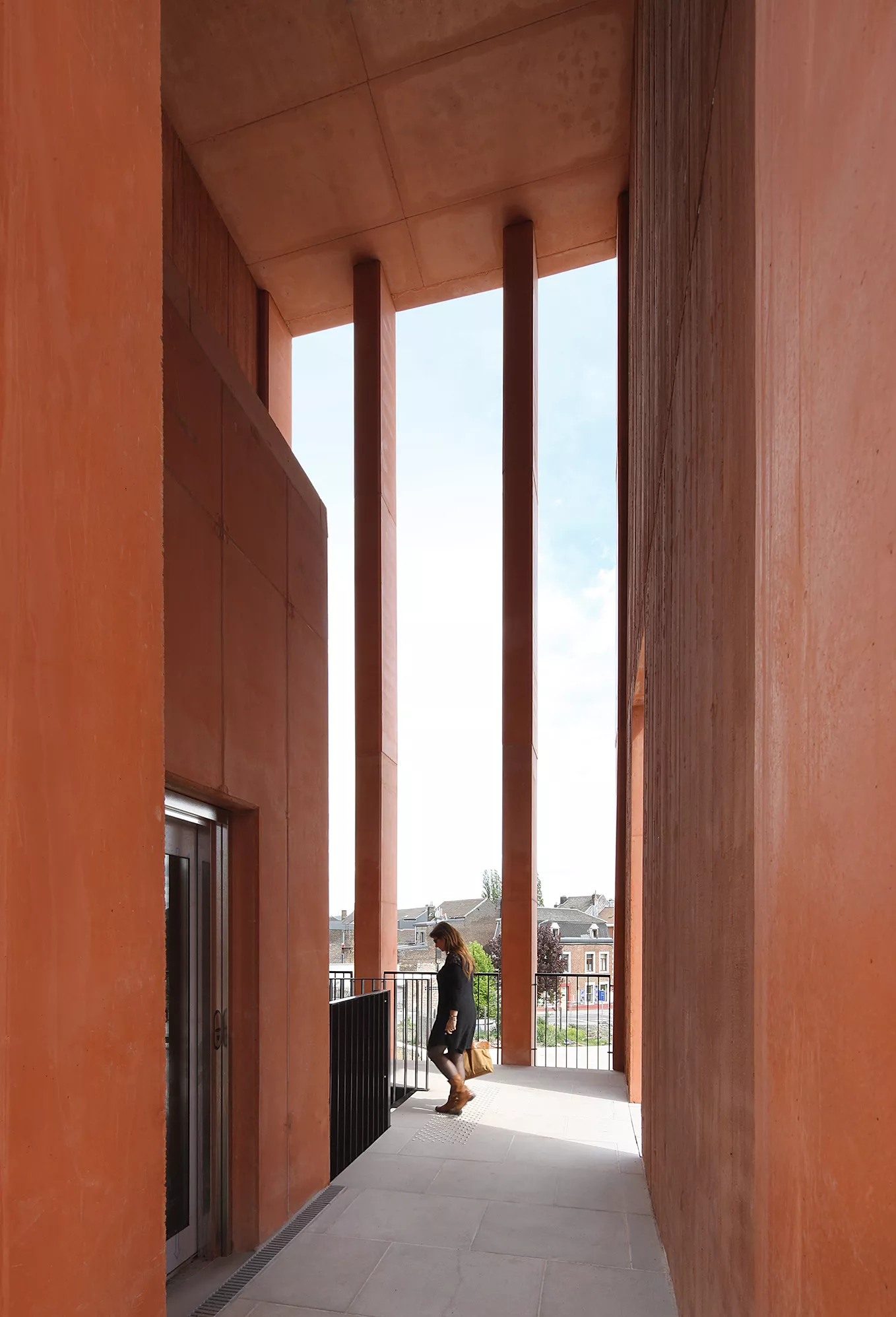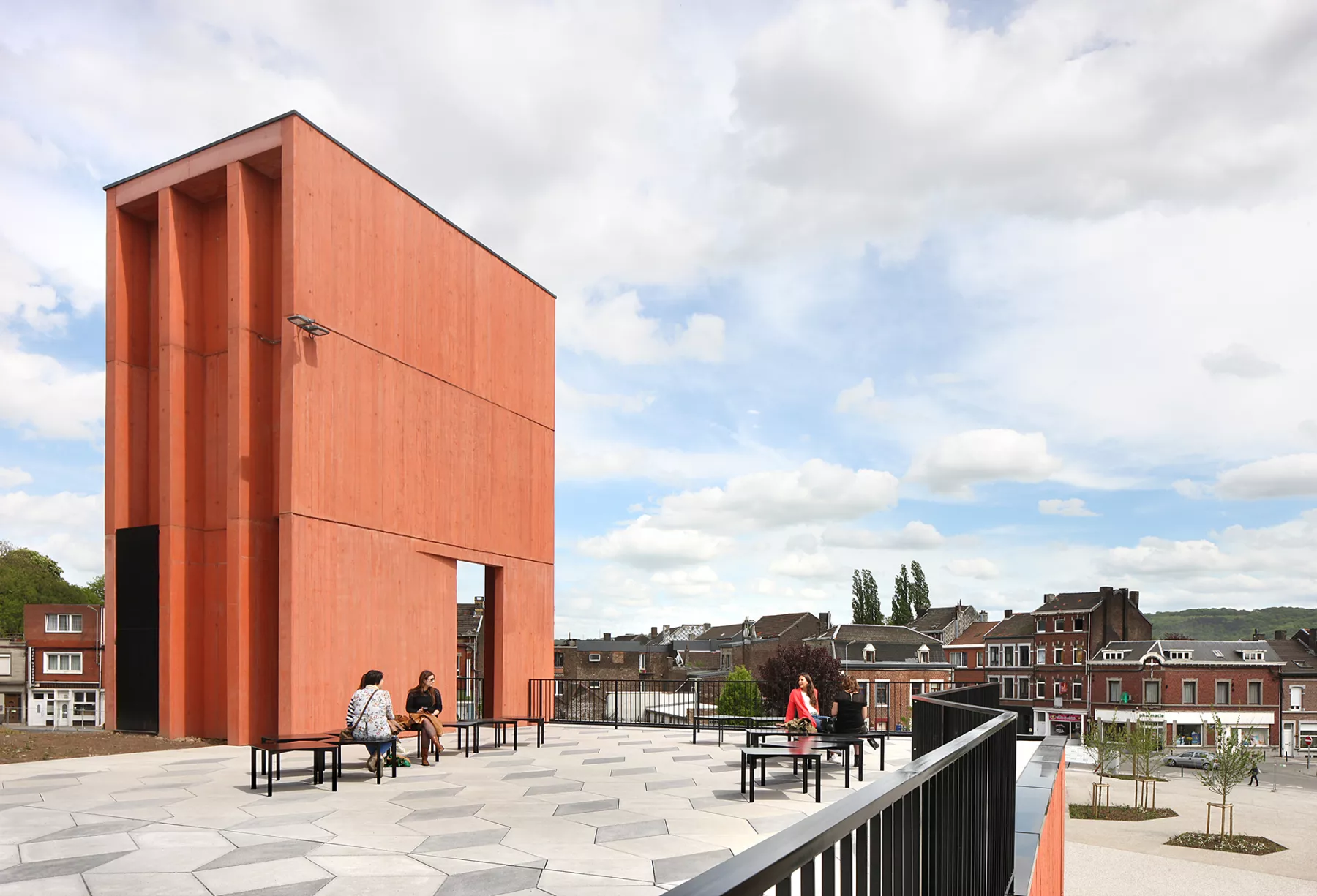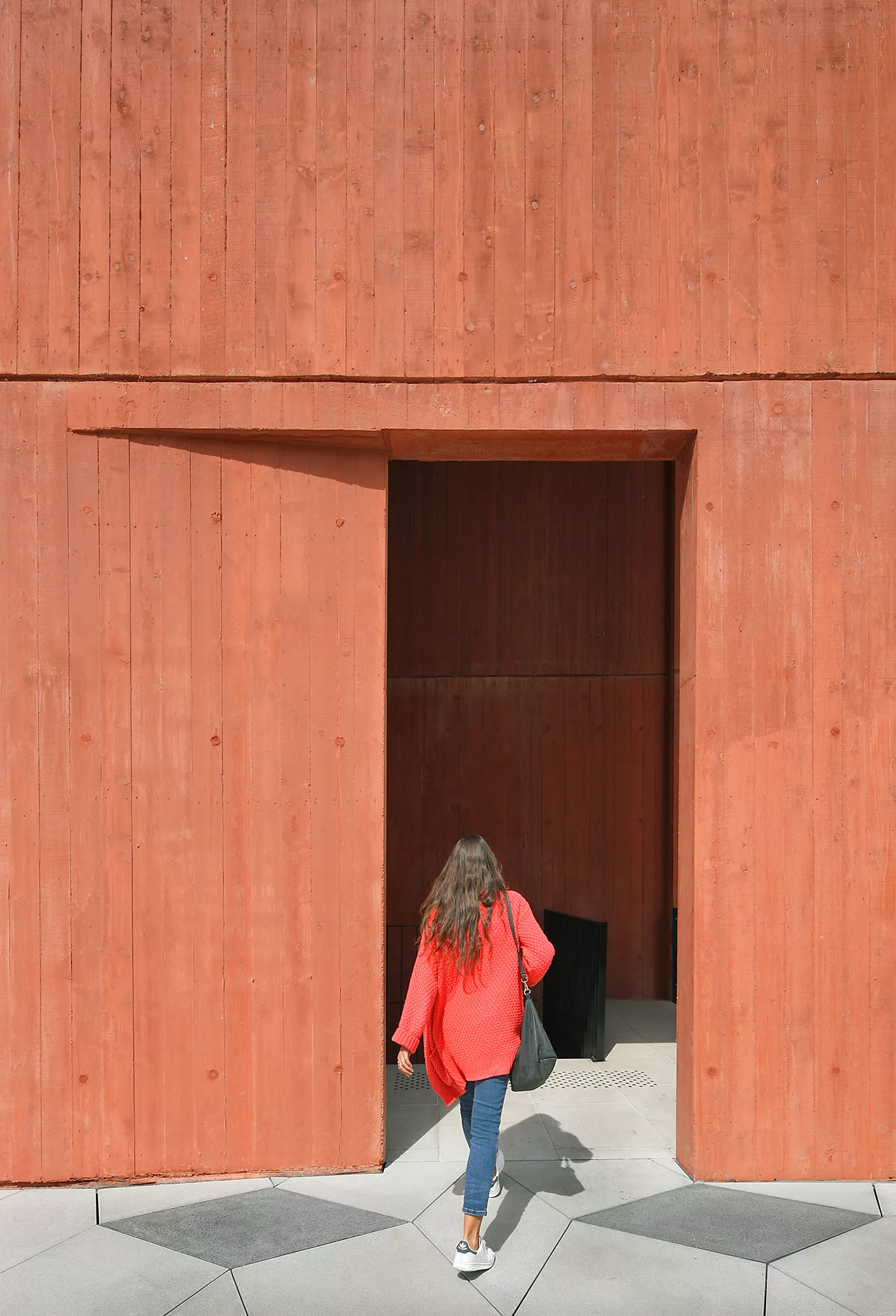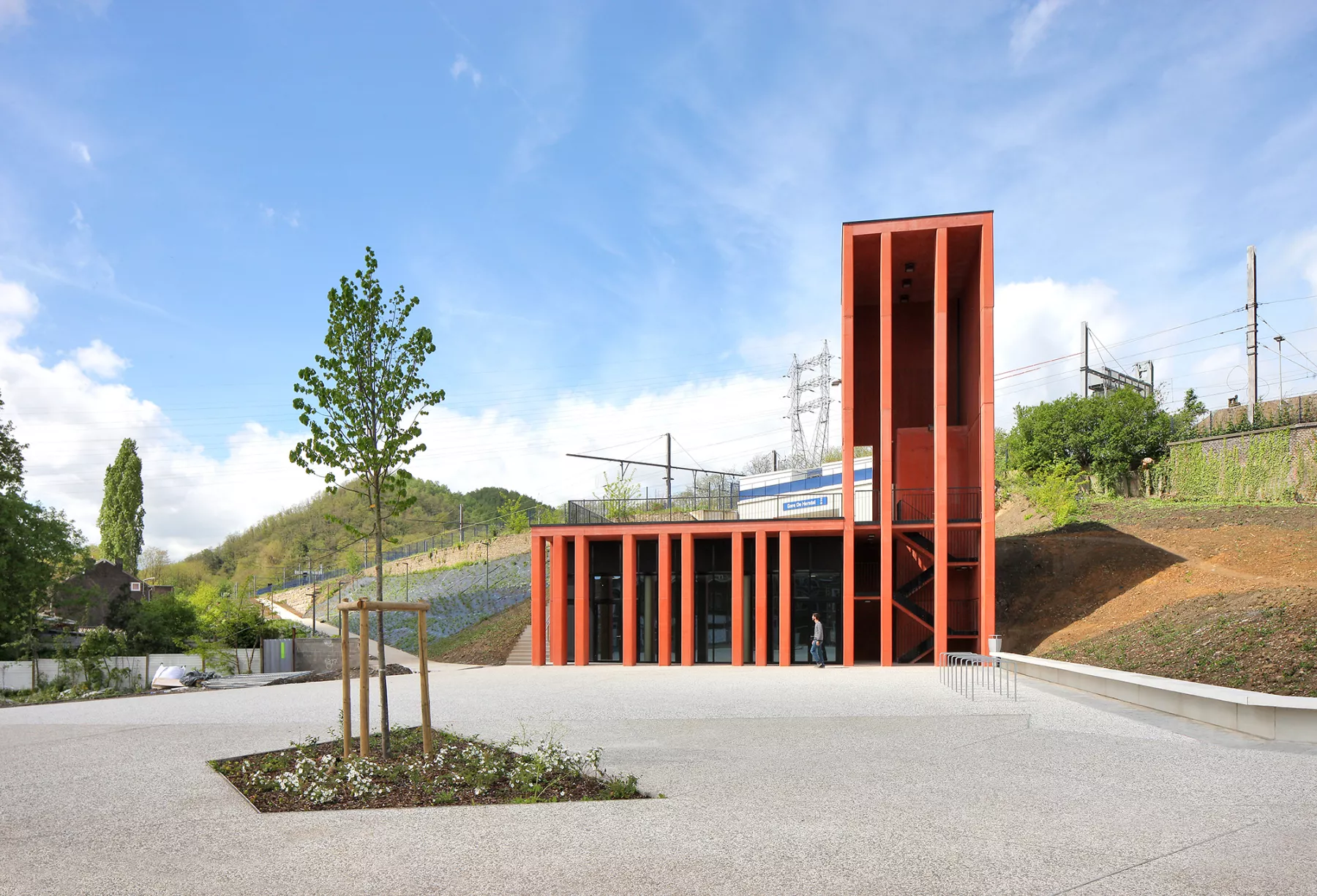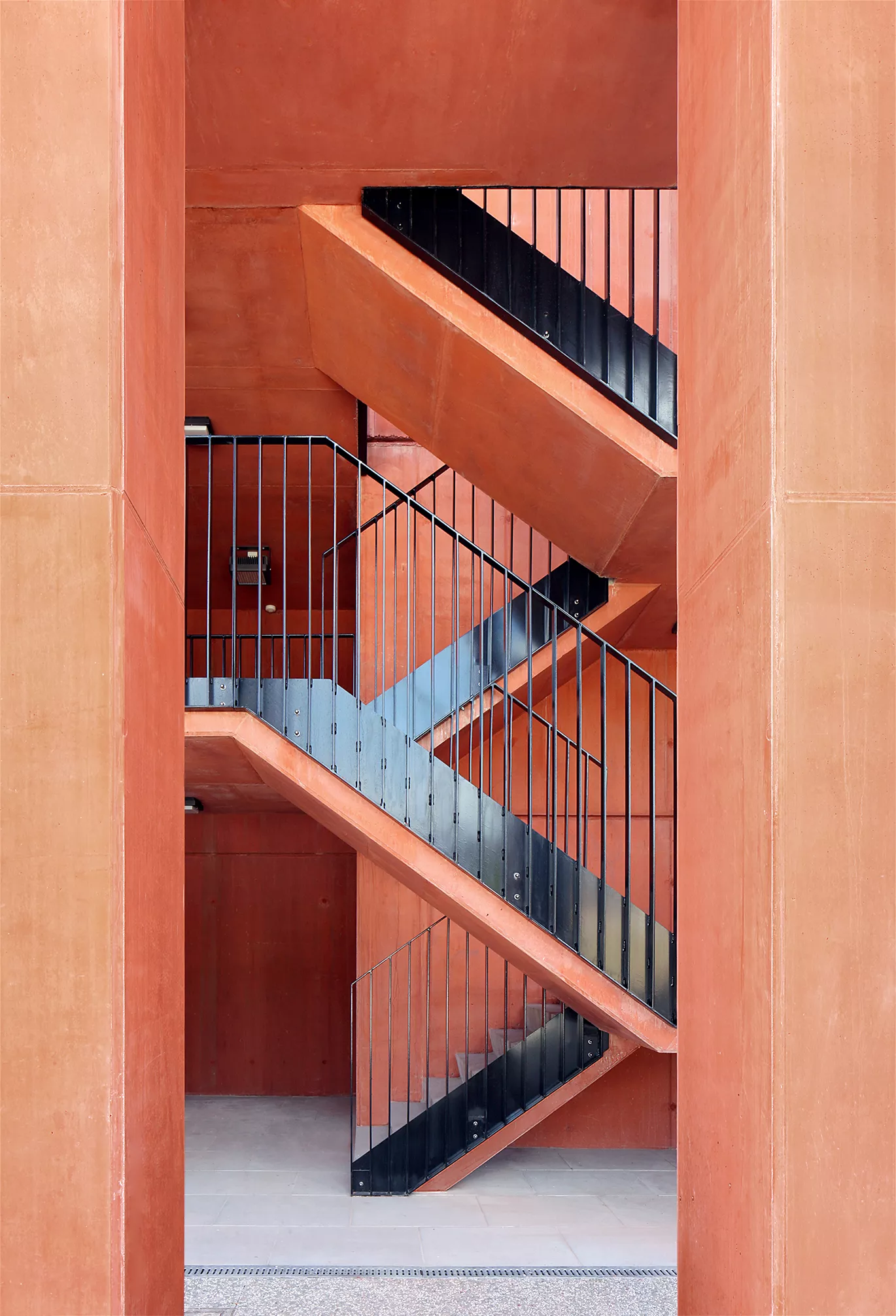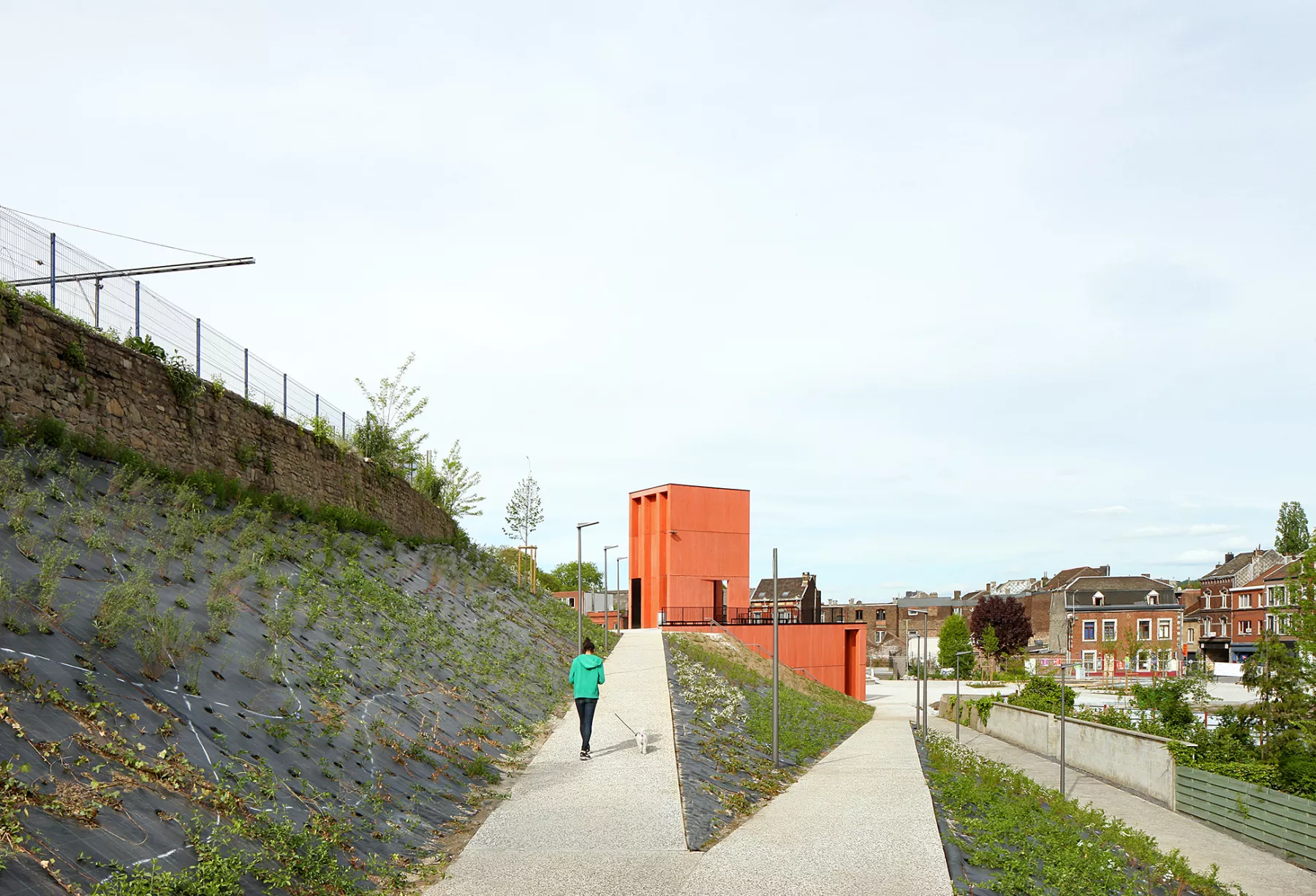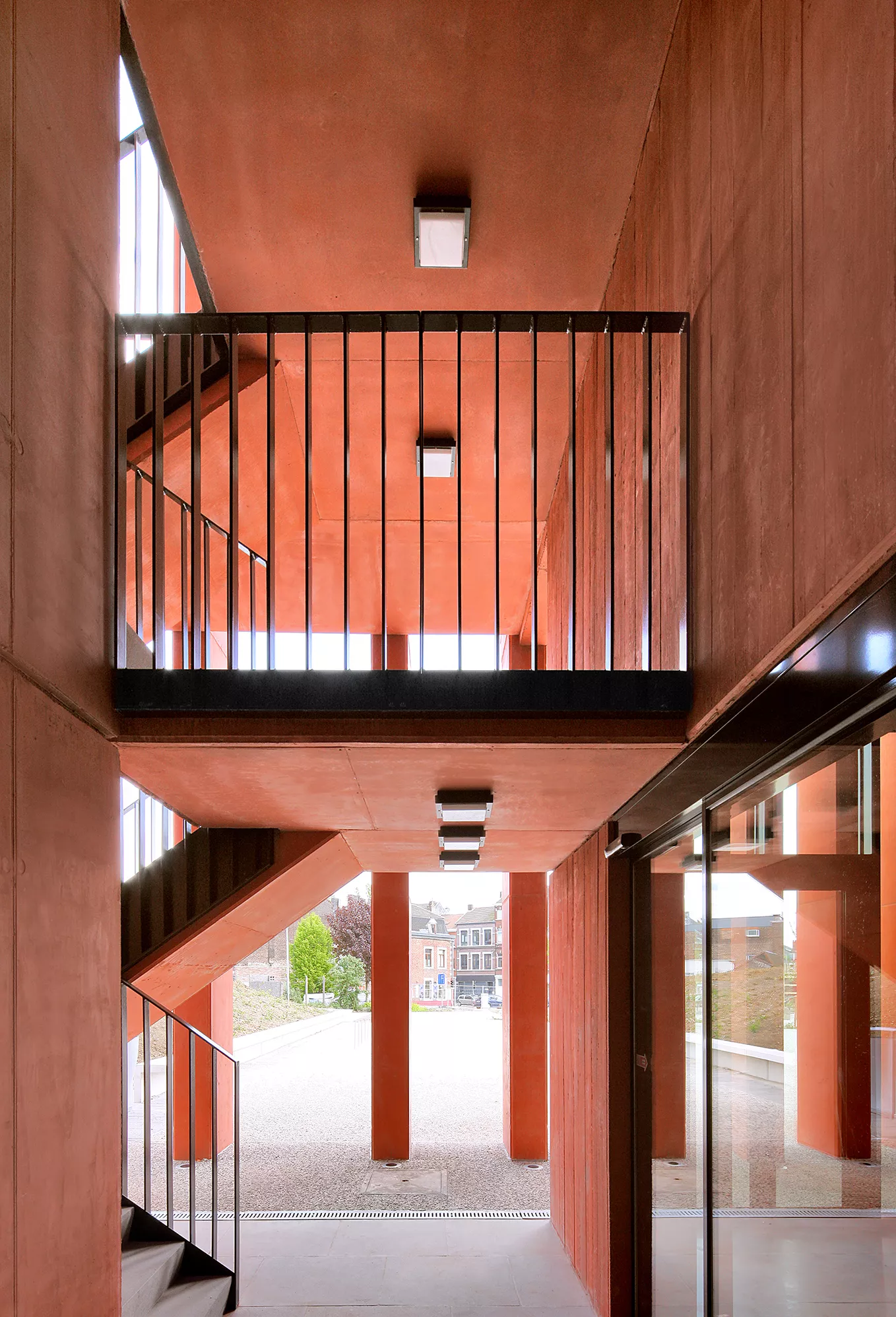- Location
4040 Herstal
Belgium
- Type
-
- Landscape
- Public space
- Train station
- Year
- 2009-2015
- Size : landscape + built
- 450 m² + 19.067 m²
- Type of procurment
- public
- Status
- built
- Collaboration
SumProject, Arcadis
Herstal station - Marexhe Square.
Supported by the municipality of Herstal, the train station project is one of the keystones of the development project for the town's new urban center. By its very function, a train station brings distant cities closer together; while paying particular attention to local mobility issues, enhancing an existing landscape, and considering the station as a gathering element in the city.
Above all, it was necessary to make this mission an exemplary urban project, both from the point of view of its integration into a particular existing context and from the point of view of the major principles of mobility and the logic of movement in the city. Characterized by narrow streets and a lack of public spaces, the lower town of Herstal required a thorough requalification of the existing facilities: one-way streets, widening of sidewalks, reduction of on-street parking spaces and creation of new parking lots, and the creation of a plateau at the intersection in the extension of the new square. Particular attention was given to universal accessibility, the continuous implementation and gentle slope ramps allow for comfortable accessibility for disabled people and all active users, pedestrians and cyclists.
The new Marexhe Square recreates on different levels a strong link between the wooded hillsides on the heights of Herstal and the densely built-up lower town. The transformation of a residual space into a public park, the greening of the railway embankments and the maximization of vegetation on all public spaces have allowed this project to offer new landscaped spaces accessible to the inhabitants of the district, but also reinforced a link of the regional ecological corridor on the slopes of the Meuse valley.
In this changing context, robust materials were preferred. The square and the new train station were made of cast-in-place concrete. During the execution phase and the construction site, a follow-up allowed for a very careful execution, particularly through reflections on the integration and the location of the numerous underground impediments and their aediculae on the surface. Constructive exchanges upstream made it possible to reduce their visual and spatial impact while meeting all the technical needs of this contemporary central place.
